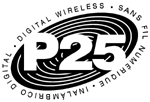At Scanner Master, we’re more than a retailer – we are also an online resource for the police and emergency services scanner community.
If you’re looking for information on police scanner codes, police scanner frequencies, scanner codes, scanner frequencies, police radio frequencies or other information, use this section as your guide.
Keep in mind that we’re always happy to talk, chat or email with you about your specialized problems. The world of police and emergency responder scanning is as vast as the U.S. and Canada, so visit this page frequently for the latest updates of concern to our scanning community.
The best national resource for frequency information is found
at www.radioreference.com. Just create a user name
and password for free (although donations are welcome) and then go to the
“Database” and then “Database Home” for all the information you could ever want
on frequencies and trunking talk groups for your area or any area in the
nation.
Frequencies, communications systems
and more!
If you’re looking for frequencies
and trying to understand the many communication systems in your area, you’re come
to the right place. Let’s cover some of the basics. There are three types’
communication systems:
Analog conventional
Trunking
Digital
So that means there are three levels of scanners:
1. Analog Conventional
2. Analog trunking
3. Digital (scanner cover all three types of systems)
The type of scanner needed is determine by the communications systems in use in
your area.
Let’s start off with understanding the three types.
What is an Analog Conventional Scanner?
These scanners are great for monitoring basic analog “FM” police and fire systems
and usually AM Commercial aviation.
Analog conventional scanners do not pick up
trunking, digital, 700 or 800 MHz systems.
Basic scanner can also pick up:
Amateur Radio
Marine
Railroad
Air (Excluding Military Air)
FRS/ GMRS
Racing
What is an Analog Trunking Scanner?
These scanners are non digital that pick up both analog conventional and analog
trunking scanning them at the same time.
Trunking is a system which multiple agencies are sharing the same system.
One individual department conversation jump from one frequency to another.
Conversations of individual group/department can be followed by programming a
talk group. Most system there is one frequency called a Control Channel,
this channel sounds like a buzz-saw if monitored conventional. The Control
Channel is the brain of the system, assigning each user on the system a
frequency when transmitting.
Here is Example using Portland, ME Motorola Type II Trunking system, let’s
break down steps of programming a trunking system:
Step 1 – First you need to determine
the type of trunking system.
LTR
EDACS
Motorola System I/II
(This system is Motorola System II)
Step 2 – You would then enter the group of frequencies of the nearest
transmitter site in your area.
Site 1 - Portland - 866.06250, 866.28750, 866.31250, 866.53750, 866.56250,
866.78750, 867.28750c, 867.78750c, 868.28750c, 868.78750c
Site 2 - Scarborough - 855.98750, 856.26250, 856.46250, 857.21250, 857.46250,
857.73750, 858.21250, 858.46250
The “C” indicates it a control channel
(If you’re in downtown Portland you would pick site 1)
Step 3 - The final step is programming the talk-groups you wish to monitor.
Talk Group User
48
Police
Dispatch
80
Police Car
to Car
1648
Fire
Dispatch
1744
Fire
Operations 2
Programming a trunking system can be
made this simple by getting the optional ARC (Advice Radio Control)
software. This software looks very much like a spreadsheet. You can
enter the data into the appropriate fields. The other option is to leave
the programming to us with our HomeTown Programming Service.
 What is a digital “Project 25” (P25)
Scanner? What is a digital “Project 25” (P25)
Scanner?
This type of scanner can pick up analog/digital conventional communications and
analog/digital trunking. Digital communications are transmitted in ones and
zeros like computer binary code, or like Digital TV. Digital scanners
decode both a digital signal and receive analog signal. Digital scanner
cannot pick up encrypted communications, or cell phone calls. It’s not possible or lawful. Click here to see our full line of Digital Scanners.
There are a few systems that cannot be monitor:
Open Sky, EDACS ProVoice, and European Tetra or any type of encryption.
Did you buy the right scanner?
If you already bought scanner, and
you are not sure if you have the right one, don’t worry! You can check by
simply visiting our sister website policescanners.net. This website will tell you what types of communication
systems are in use in your area. Plus give you the recommended scanners for
that area too. All so you can find great links to online frequency
databases covering your local area.
|